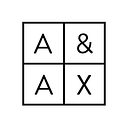The rise and descent of the Chinese Art Market
When I was a tinier moose of about 8 years old the treasures of China came to be shown in San Francisco. I was a decidedly unusual child and was fascinated by all things ancient. This show had a jade suite in it and I had to see it.
The old San Francisco Asian Art Museum was spectacular. It was connected to the DeYoung Museum. Both buildings where I believe survivors of some worlds fair in Golden Gate Park. Around every corner was a surprise and it was probably a very elegant treasure.
I was not quite tall enough to see everything as well as I would like. That day I fell in love with Chinese art. The jade suit was interesting but not exactly beautiful. The barking yet silent Han dog sitting guard for 2400 years amazed me. The simple early pots with chicken figures amused me. The willowy court figures looked like they could breath. My favorite were the Tang horses in chestnut amber, emerald green and blue glazes. A docent explained about 1400 years ago only a very important person could have a large beautiful horse and that these where the Ferrari’s of their day or the ultimate status symbol. At that time a good example would probably cost 6 or 7 figures depending on quality of modeling, size, condition and glazes. At one point I worked for a scholar of Asian Art that had a beautiful dromedary that was worth more than his very beautiful home. The few works that traded hands where found when the original railways where built in China. At that point nobody saw a day when trade would normalize especially for these remarkable things.
Fast forward about 25 years. Much had changed unexpectedly. The Chinese economy partially opened and they did not appreciate burial objects. With the exception of imperial porcelain and very good jade the people selling these burial pieces did not value them very highly. An exceptionally odd thing happened. The objects where sorted and stored with similar pieces. For a month or two you would see nothing but red painted marriage cabinets. Then a few months of Han wine jars, then altar tables, then Tang, then Han etc. One warehouse at a time. The prices where too attractive so we consulted with museum director to make sure we purchased good objects. A few years later it was nearly impossible to get the real thing but for the first year it was hard to make a mistake.
About 10 years later the gold rush started. The rapidly rising wealthy began accumulating Chinese Art and Antiques for repatriation. They remained largely uninterested in the burial pieces but their appetite for most everything else was remarkable. Prices shot up rapidly. With the help of my museum friends I had managed to acquire a decent collection of Monochrome porcelains that where made in China from about 400 years ago to 150 years ago. I began selling with glee. The market shot up another 500% and my cupboards where bare. The Chinese market at the very top end was very thin meaning more exactly that the prices where driven by literally a handful of collectors. If this is anything like the Japanese boom / what ever it will be decades before anyone looks at these pieces the same way.
As I mentioned the reset button has been hit again. I can’t help but feel a little relieved when I see prices that very nearly make sense in a historical context.
My guess for the next art gold rush is India. The culture is diverse, ancient and in at least my opinion, undervalued. Happy hunting. I love finding an elegant manuscript painting or a goddess. The export from India is no longer possible for many things. Be careful to get as much provenance as possible. In a perfect world more important objects should be imported around or before 1970. Happy Hunting
